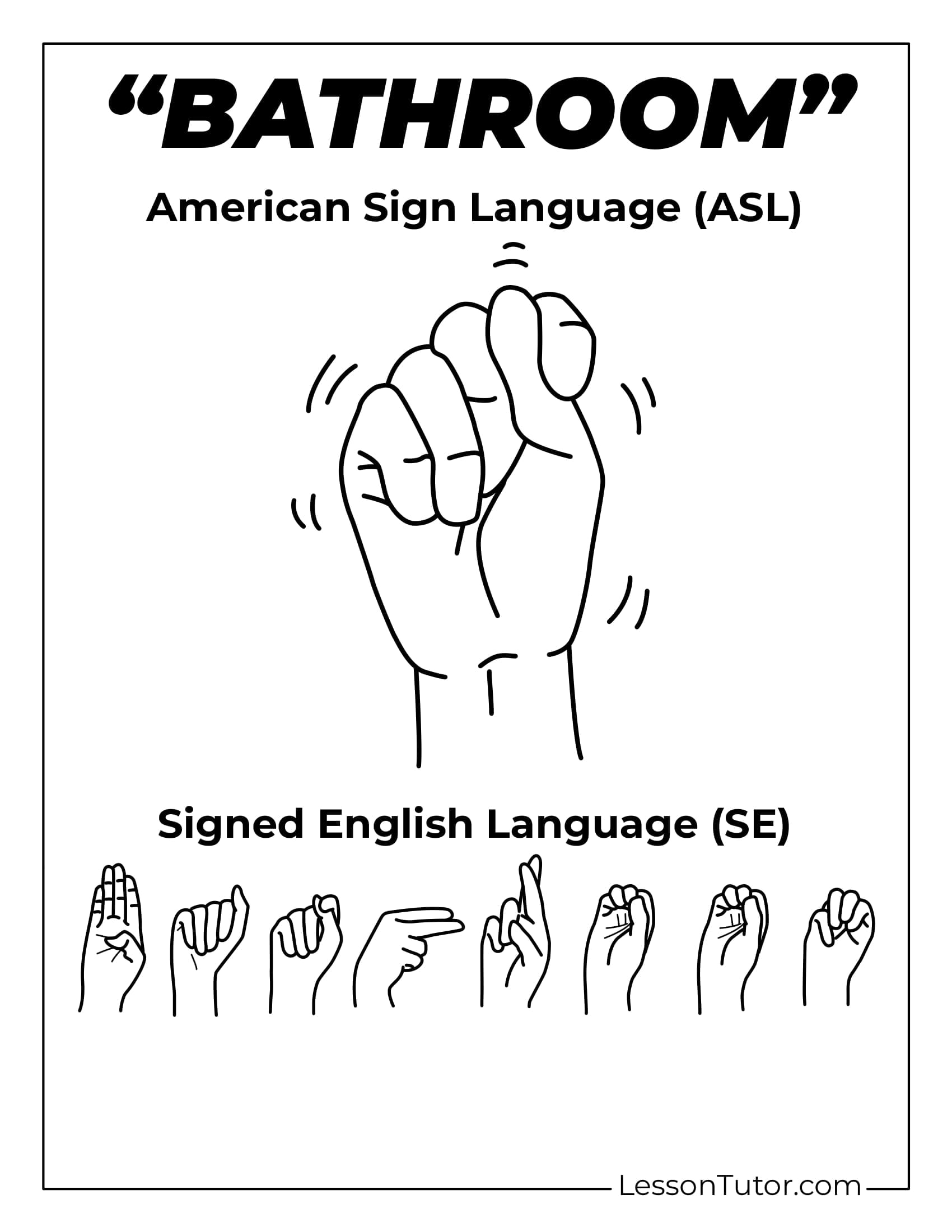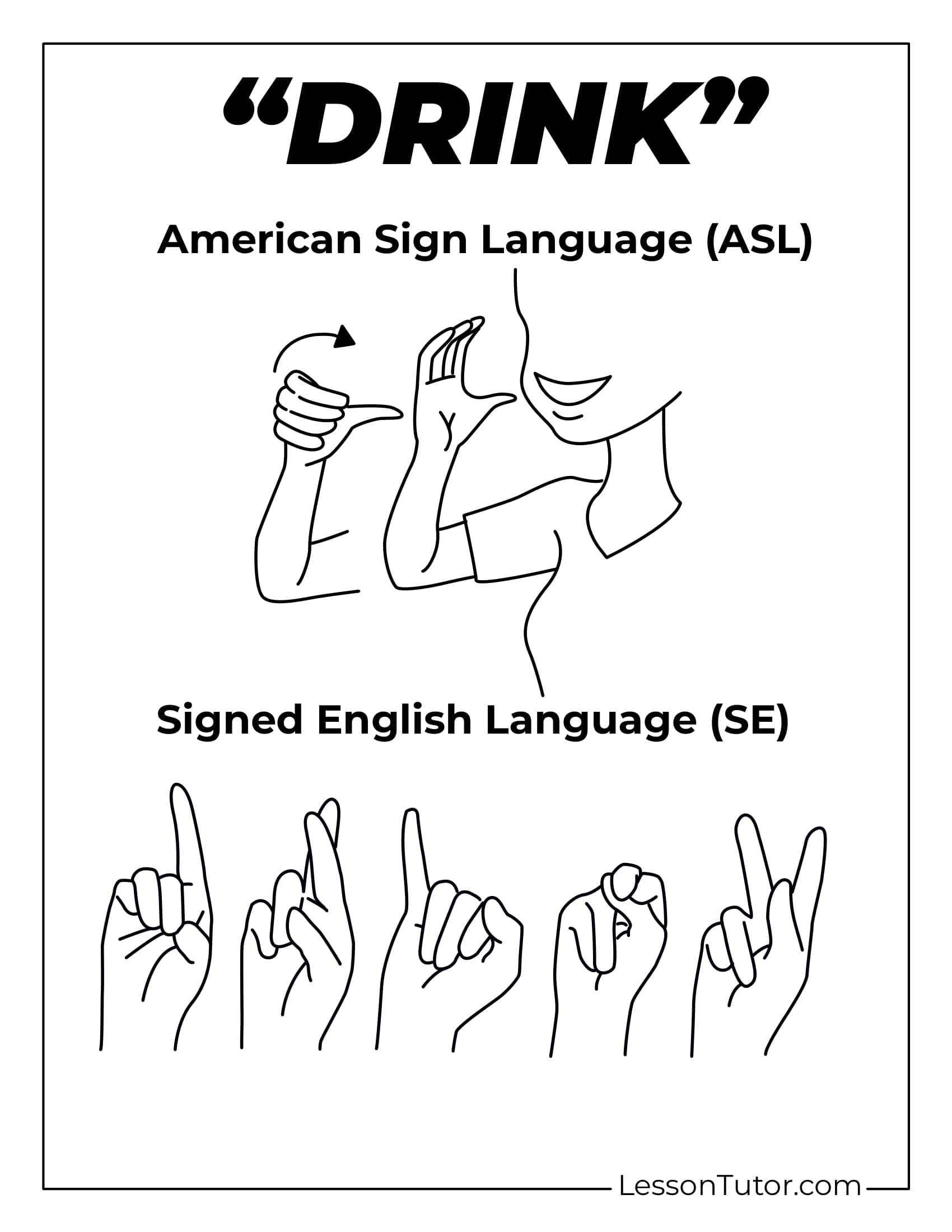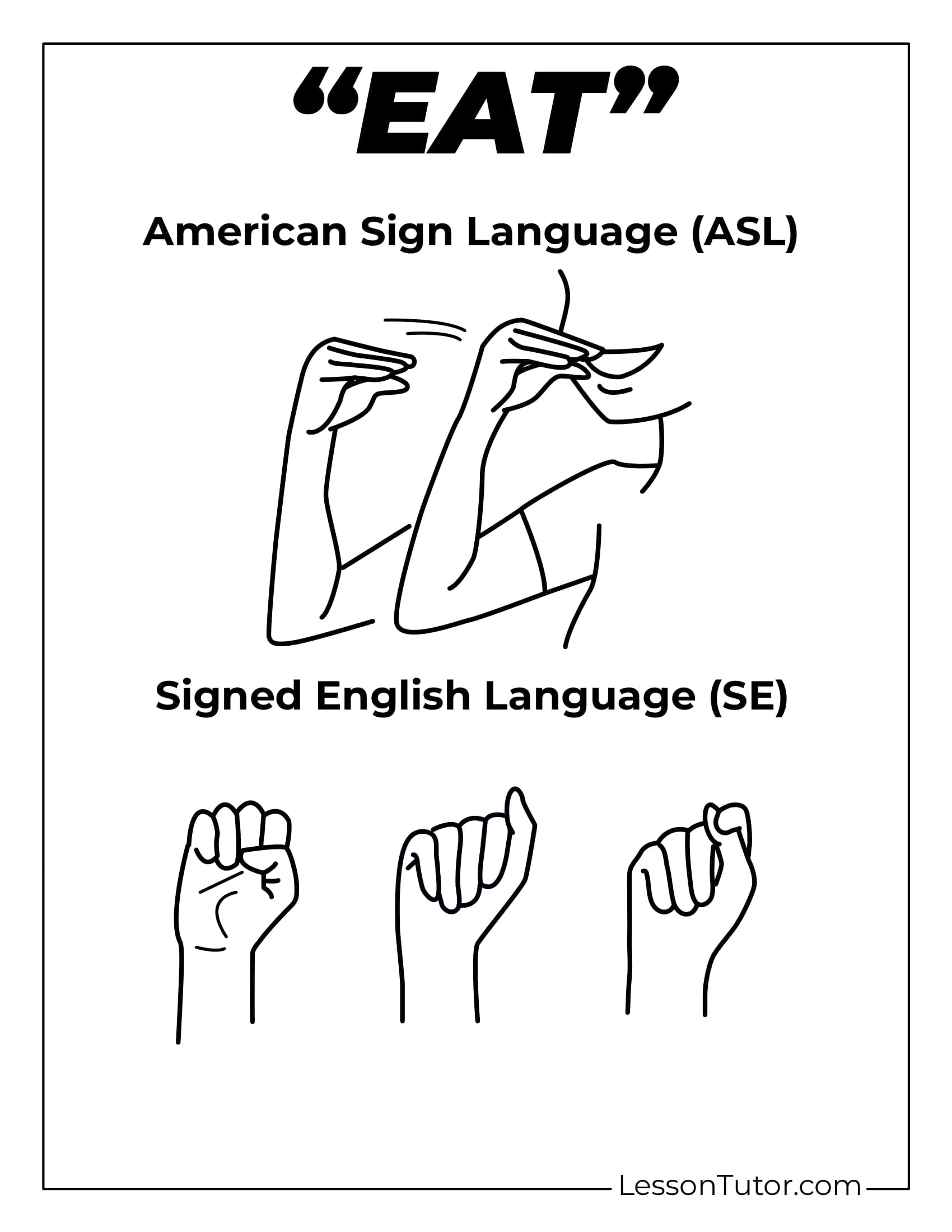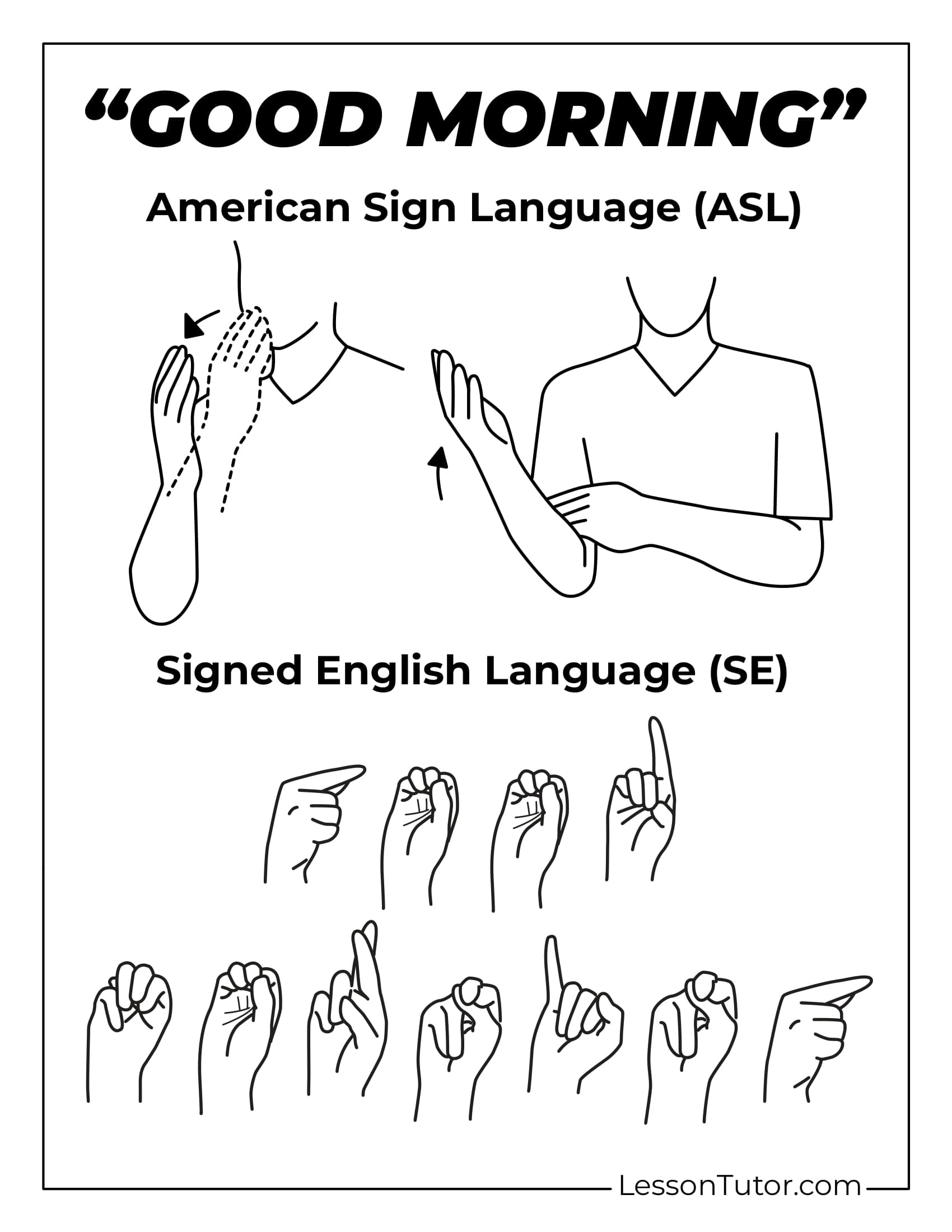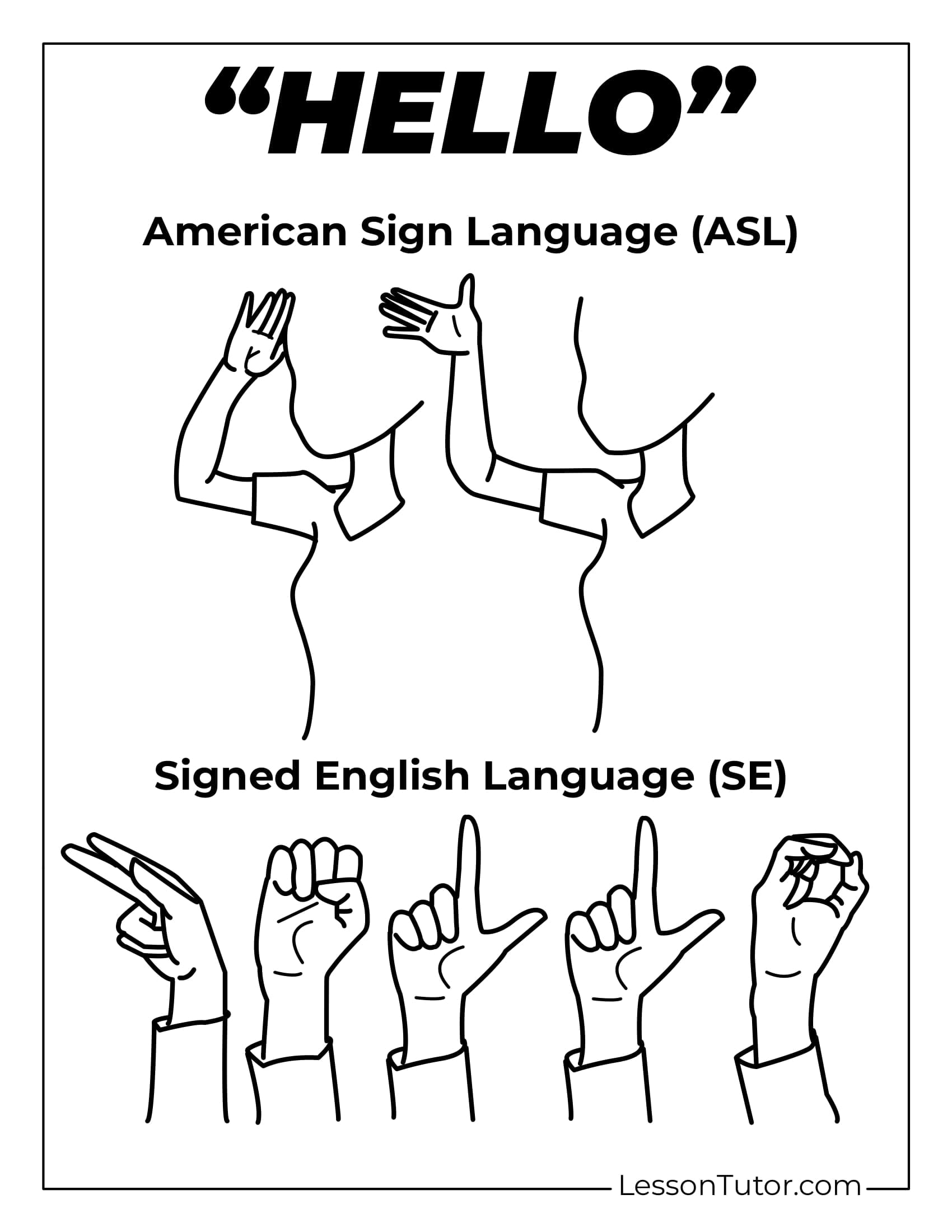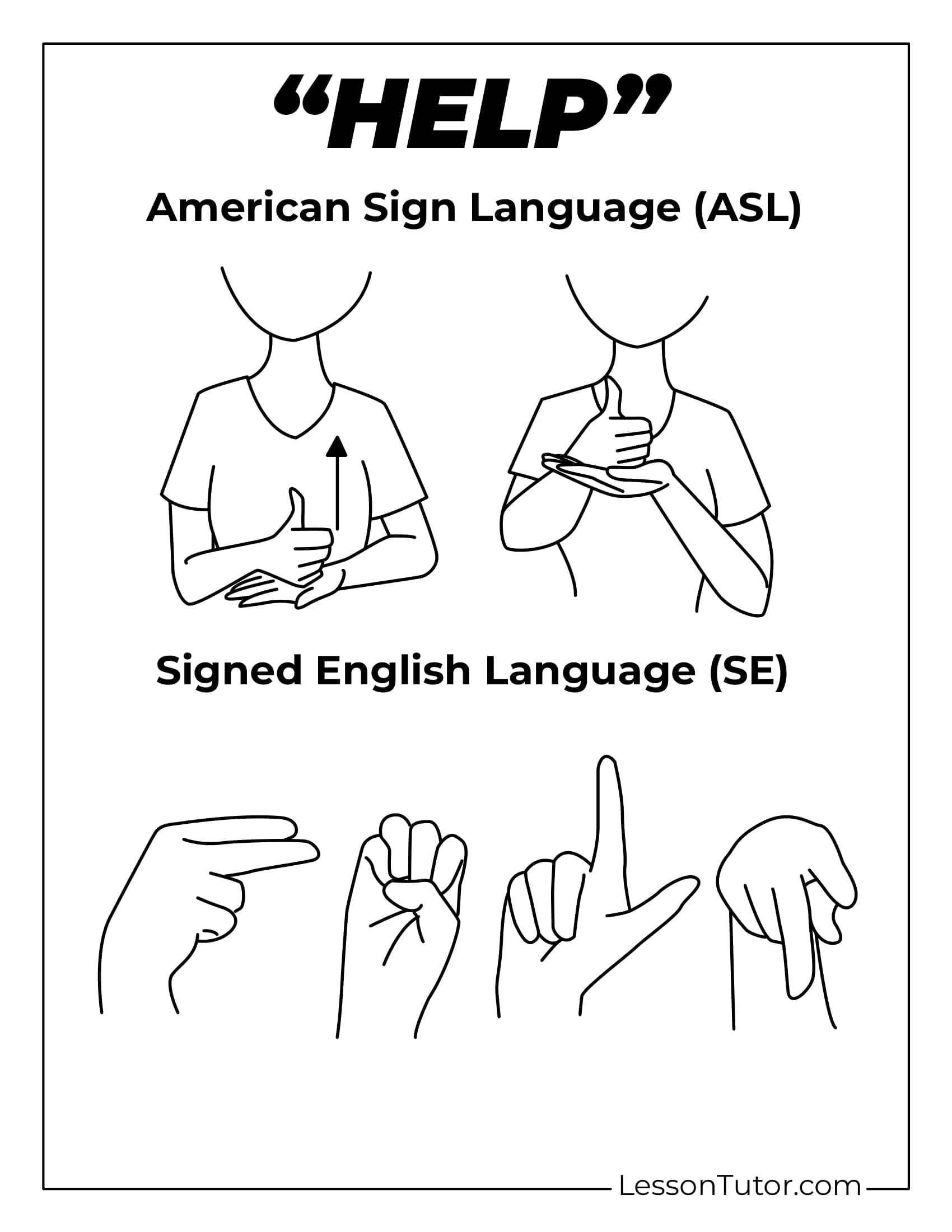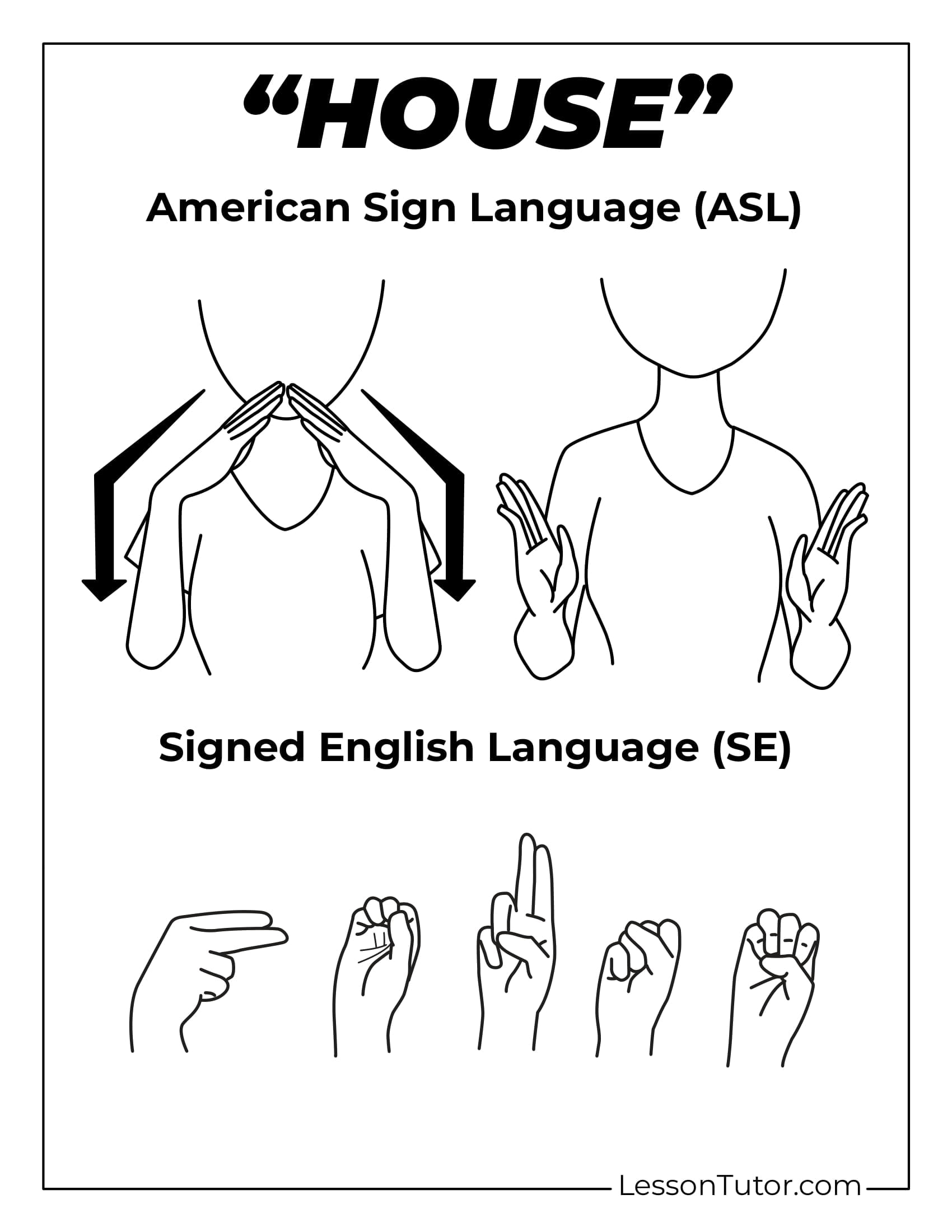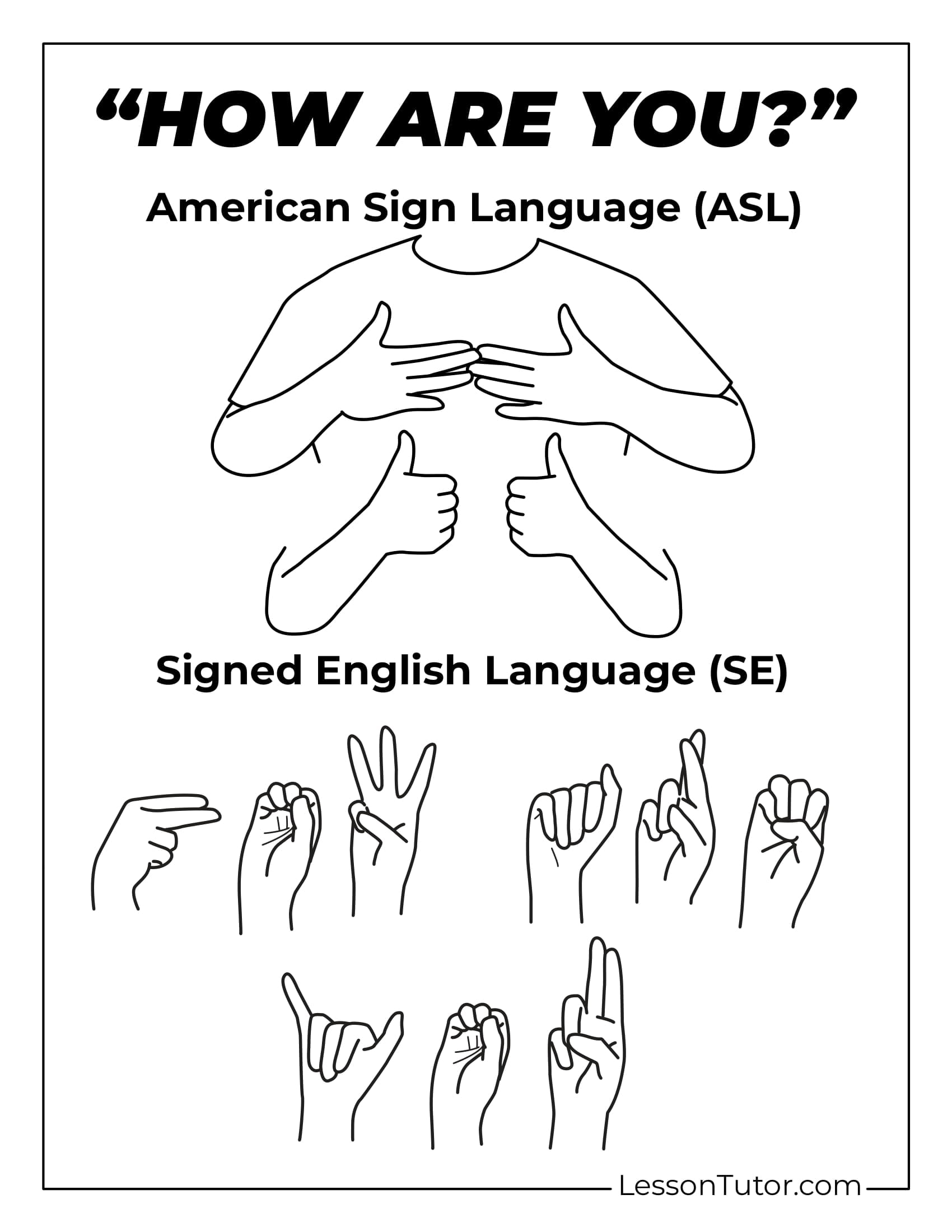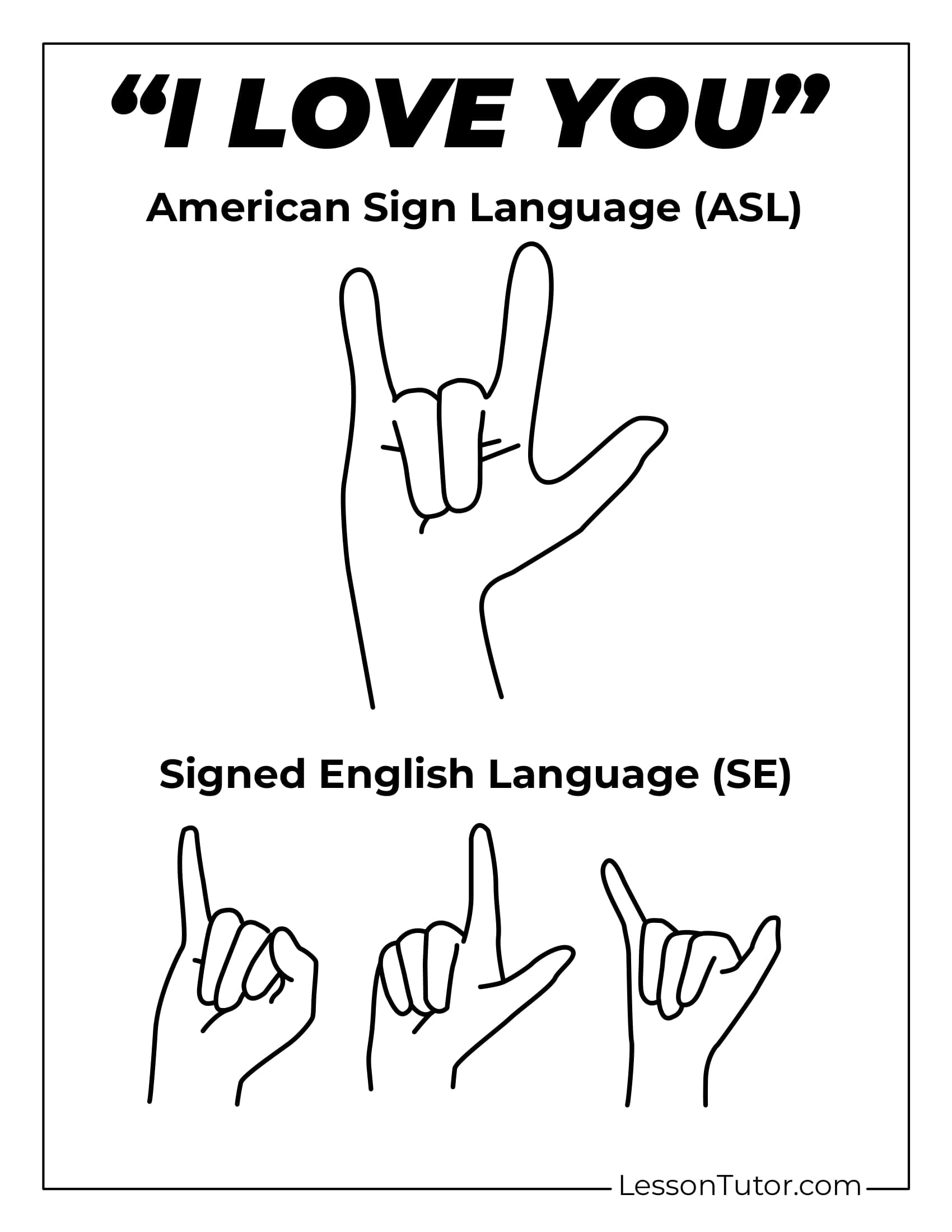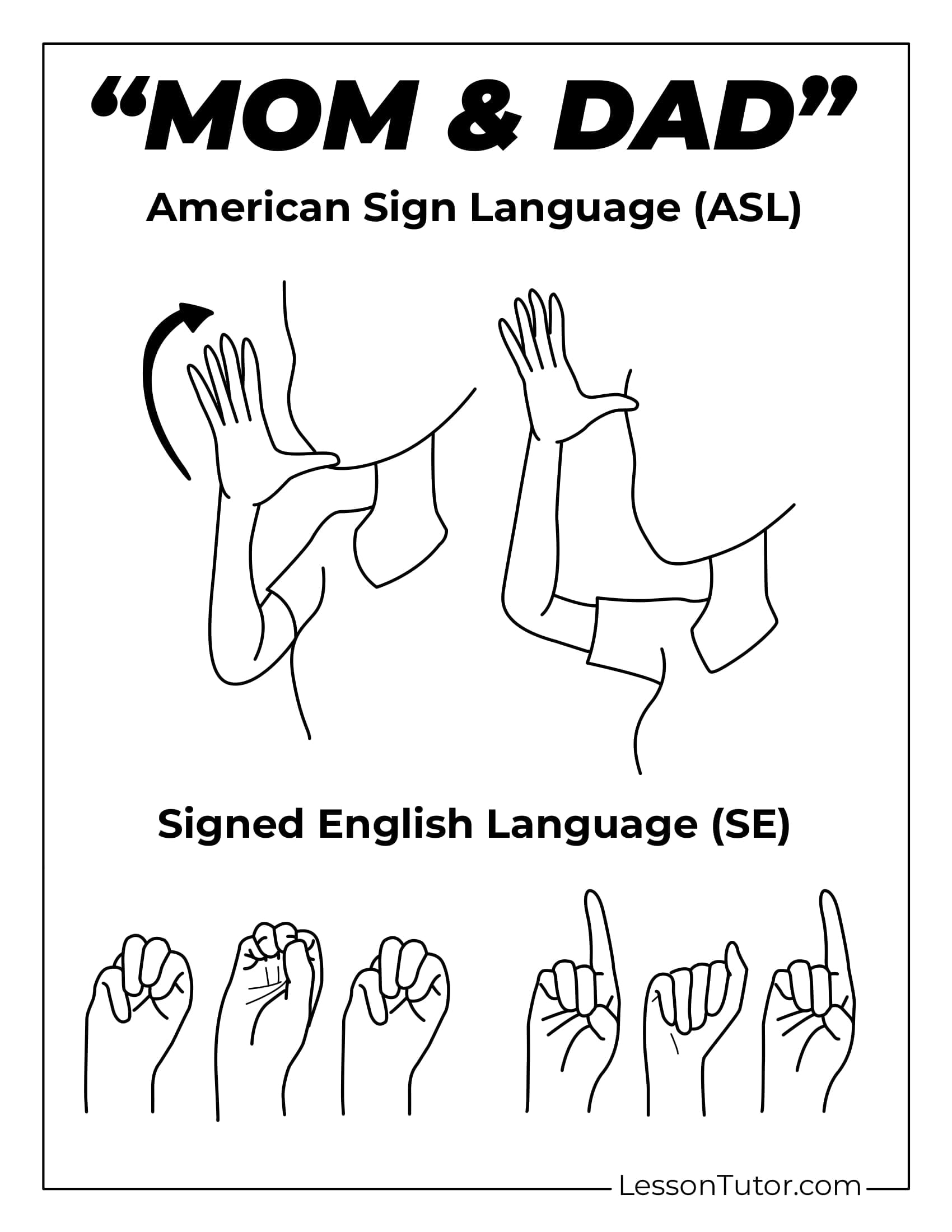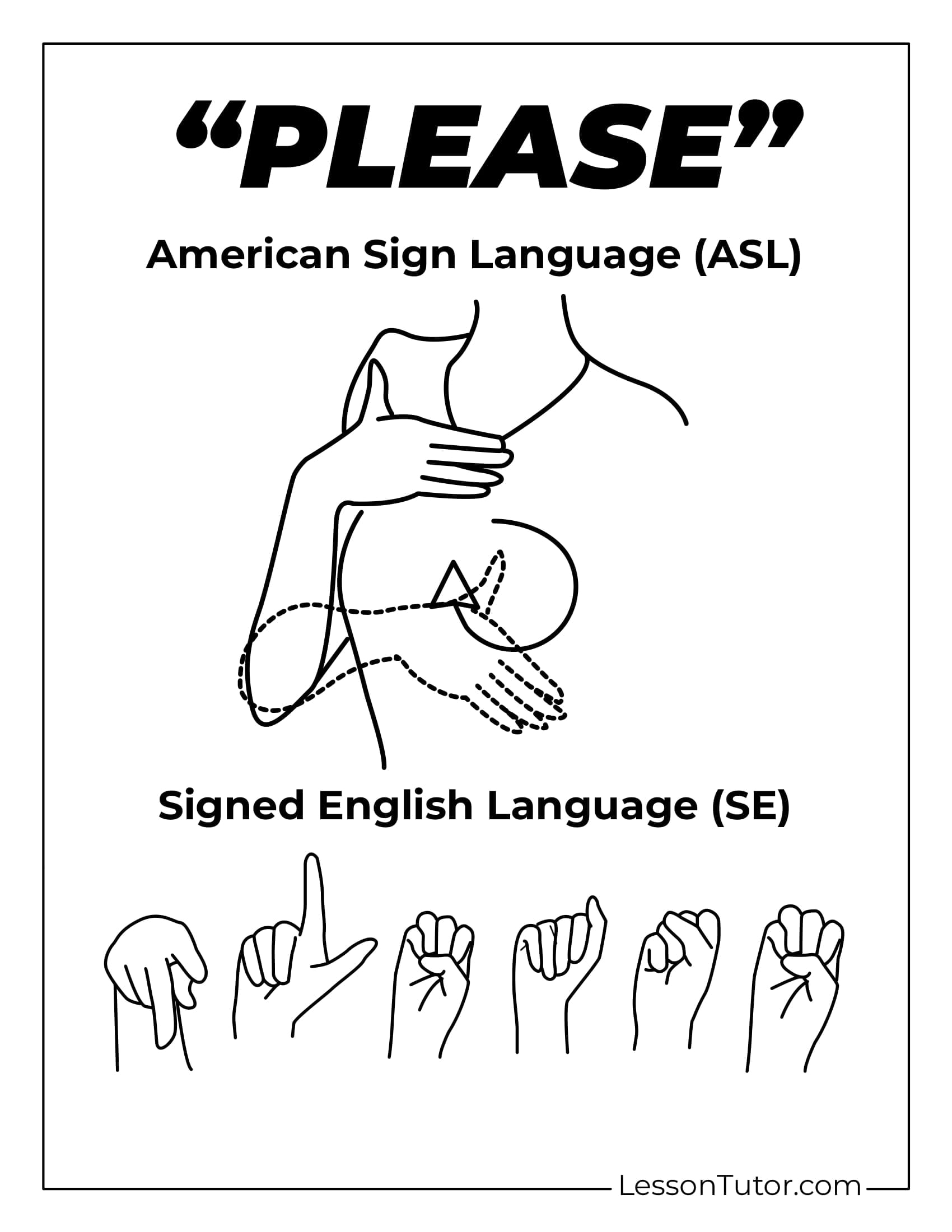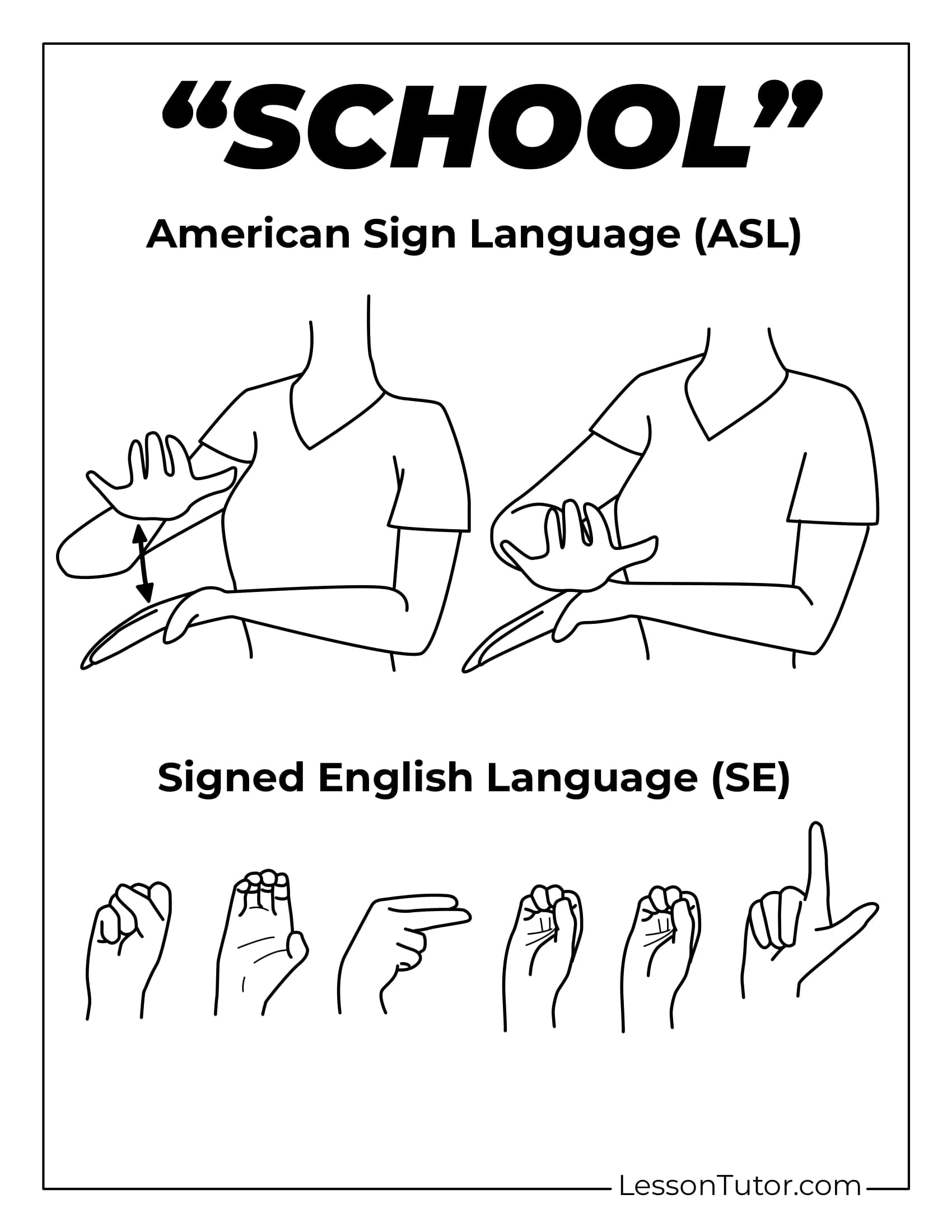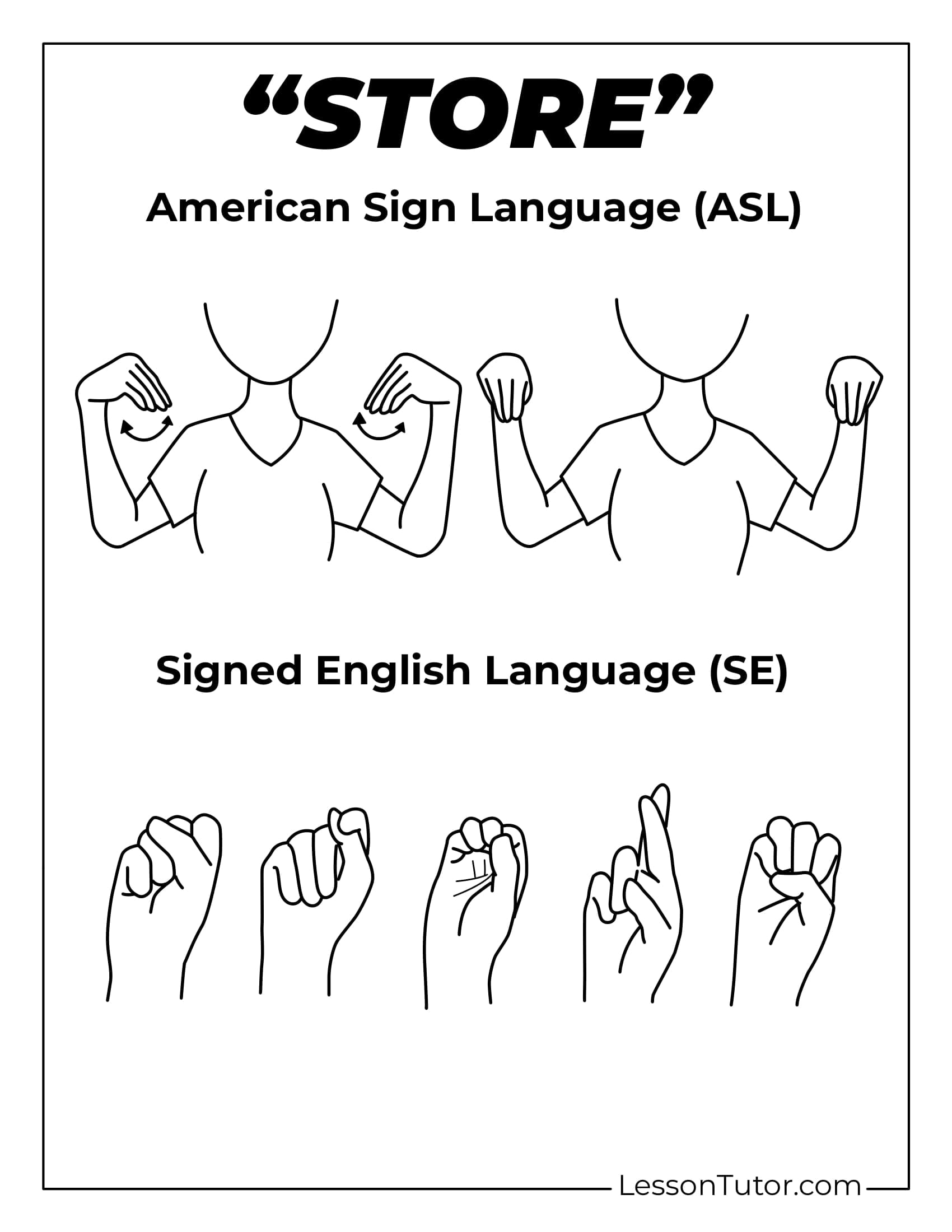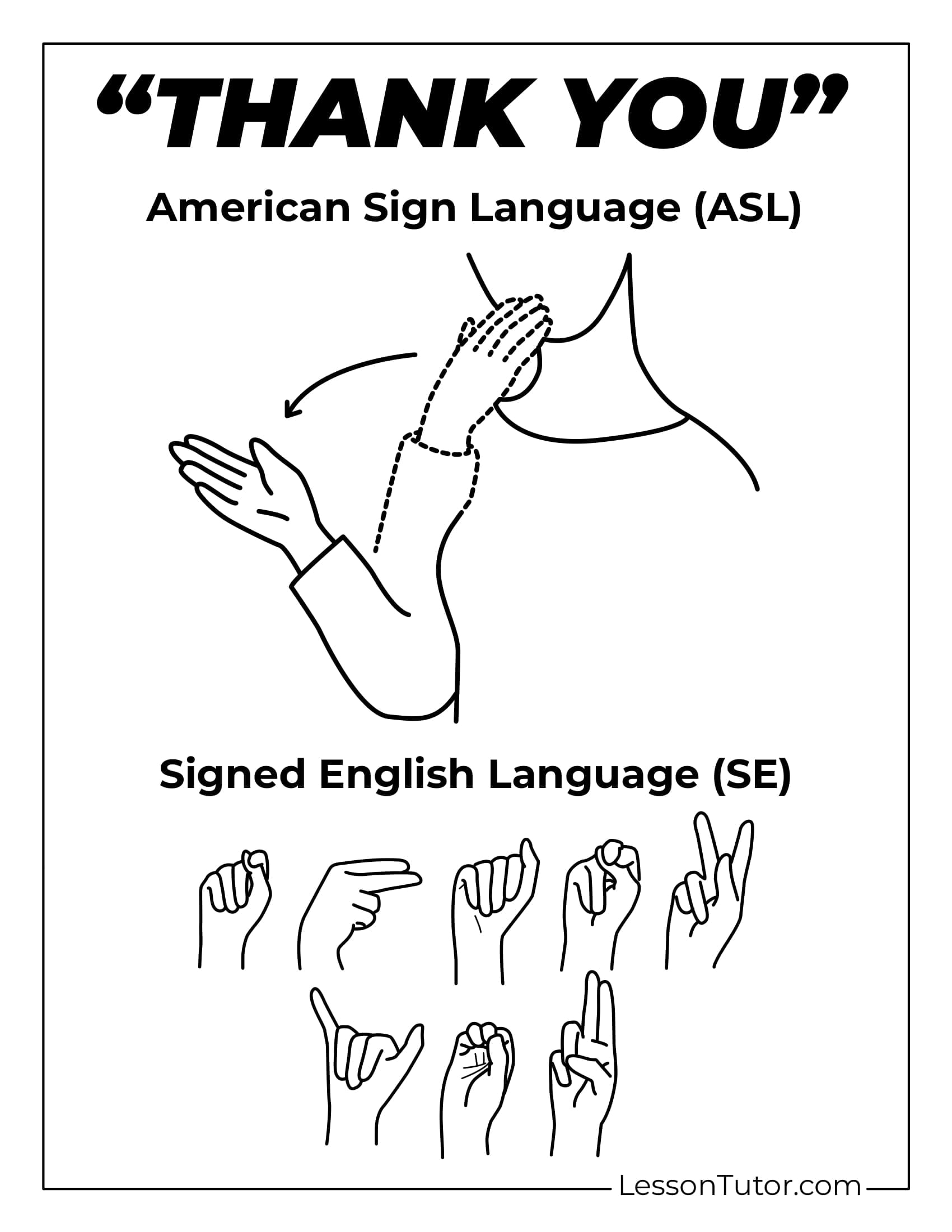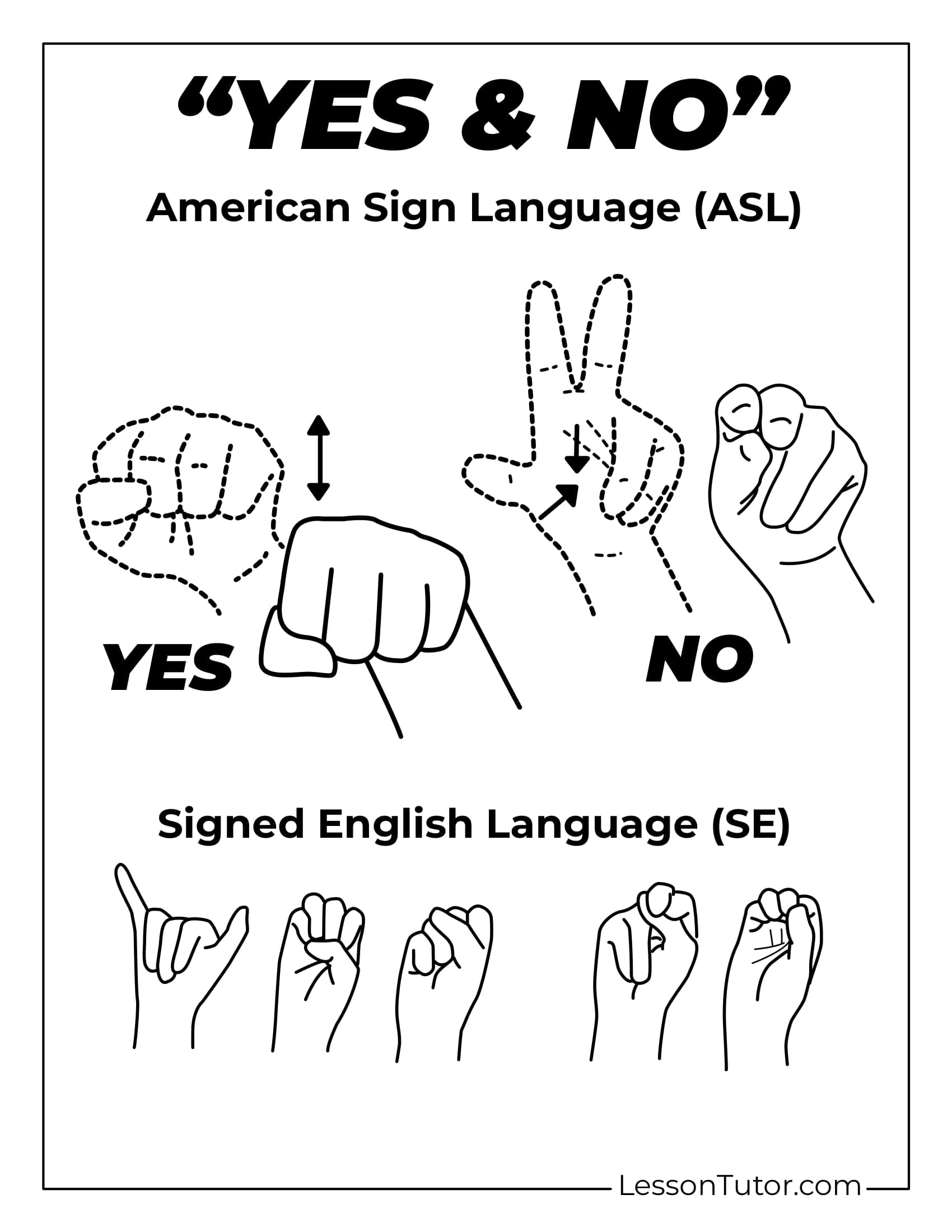Discover the differences between American Sign Language (ASL) and Signed English (SE) with this exclusive collection of 15 educational worksheets, designed for students, teachers, and anyone eager to learn! These hands-on resources compare ASL and SE signs for common words and phrases, including “Hello”, “Good Morning”, “Please”, “Thank You”, “I Love You”, “Yes” and “No”, “Eat” and “Drink.” Whether you’re exploring English in sign language for the first time or deepening your understanding, these worksheets offer an interactive and engaging approach to learning.

Formatted for A4 paper sizes and available as high-resolution PDFs, these free-to-download 15 worksheets are perfect for classrooms, homeschooling, or personal study. Whether you’re an educator looking for engaging materials or a learner eager to expand your sign language skills, this set provides a comprehensive and accessible resource for exploring the world of ASL and SE. Download now and start your journey toward a deeper understanding of English in sign language today!
Craft Ideas To Do With American Sign Language (ASL) vs. Signed English (SE) Worksheets
This collection also includes comparisons of English ASL and SE signs for essential everyday words like “Bathroom”, “Mom” and “Dad”, “School”, “House”, “Store”, and “Help”. Each worksheet features side-by-side illustrations to highlight the unique structures of ASL and SE, making it easier to grasp their distinctions. With clear visuals and guided exercises, learners can reinforce their understanding while developing confidence in using both forms of communication.
More Free Printable Worksheets
If you're looking for more related worksheet goodies that kids love, we think you'll particularly enjoy these worksheet collections:






